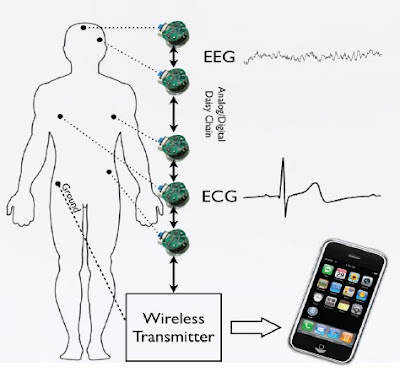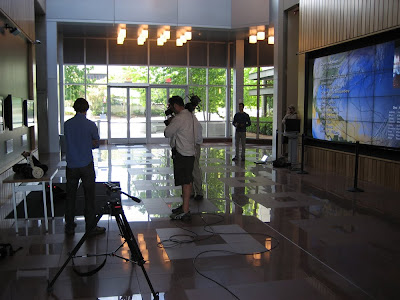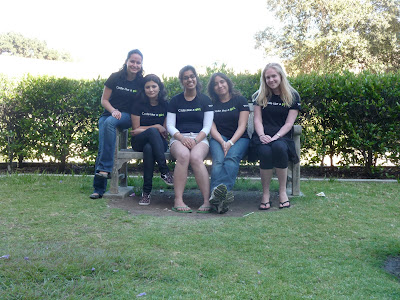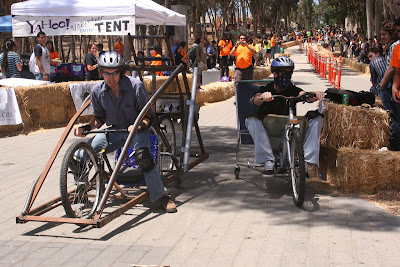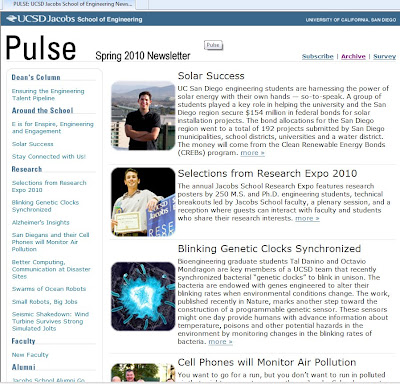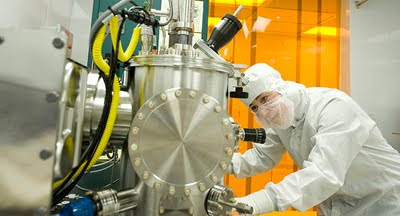The list of
Calit2 UCSD Undergraduate Summer Research Scholars is out, and many of the students are Jacobs School of Engineering undergraduates.
Avinash Ananthakrishnan, Junior, Computer Engineering (minor: Cognitive Science)
advisor: Zhongren (Arnold) Cao, Calit2
Scalable and Energy Efficient Embedded Digital Signal Processing Implementation for High Order MIMO-OFDM Systems
Thomas Chew, Freshman, Bioengineering: Biotechnology
advisor: Shu Chien, Bioengineering
Effects of Shear Stress and Chemical Environment on Stem Cell Differentiation
Ronnie Fang, Junior, Chemical Physics / Engineering Physics (minor: Biology)
advisor: Liangfang Zhang, NanoEngineering
Scaling Up of Lipid-Polymer Hybrid NanoParticles for Drug Delivery
Roger Huang, Junior, Aerospace Engineering
advisor: Jan Kleissl, Mechanical/Aerospace Engineering
Application of Total Sky Imagery to control energy storage on the UCSD campus
Suraj Kedarisetty, Junior, Bioengineering (minor: Chemistry)
advisor: Nathan Delson, Mechanical/Aerospace Engineering
Improve Patient Safety through the Development of Intelligent Medical Simulators
Daniel Lew, Junior, Bioengineering: Premed
advisor: Martin Haas, Cancer Center and Biology
BMI-1 Promotes Cellular Invasion and Drug Resistance in Head and Neck Cancer Stem Cells
Nicole Lim, Freshman, Bioengineering: Biotechnology (minor: Law & Society)
advisor: Joseph Wang, NanoEngineering
Smart NanoScale Devices
Kristian Madsen, Junior, Electrical Engineering
advisor: Deli Wang, Electrical and Computer Engineering (ECE)
Vertical Nanowires and Heterostructures for Photoelectrochemical Water Splitting
Emi Nakayama, Junior, Chemical Engineering
advisor: Jennifer Cha, NanoEngineering
A Mechanism Control the Size of Microbubbles for Ultrasound Imaging and Drug Delivery
Perry Naughton, Sophomore, Electrical Engineering
advisor: Deli Wang, Electrical and Computer Engineering (ECE)
Low Cost Solar Cells using Simple and Inexpensive Spray Pyrolysis Technique (SPT)
Bryan Ransil, Freshman, Computer Science
advisor: Falko Kuester, Structural Engineering
Human-Data Interaction
Arvind Satyanarayan, Junior, Computer Science
advisor: Jim Hollan, Cognitive Science
Interaction Techniques for Large Wall Displays
Emily Schoenhoff, Sophomore, Bioengineering
advisor: Robert Sah, Bioengineering
Cartilage Degradation in Aging Humans - Collagen Network
Justin Tse, Junior, Bioengineering: Biotechnology
advisor: Adam Engler, Bioengineering
Directing Mesenchymal Stem Cell Migration with Matrix Elasticity
Alan Turchik, Junior, Mechanical Engineering
advisor: Tom Levy, Anthropology, Calit2
Camera Stablization for Aerial Photogrammetric Systems
Grant Van Horn, Sophomore, Computer Science
advisor: Serge Belongie, Computer Science and Engineering (CSE)
GroZi and Visipedia
Christopher Wei, Sophomore, Bioengineering: Biotechnology
advisor: Kun Zhang, Bioengineering
De Novo Assembly of the Microbial Genome
David Yi, Junior, double major: Bioengineering: Premed and Biochemistry/Cell Biology
advisor: Weg Mendoza Ongkeko, Surgery
Identification of a Distinct Subpopulation of Cancer Stem Cells Critical for Metastasis and Tumor Growth in Human Anaplastic Thyroid Cancer
